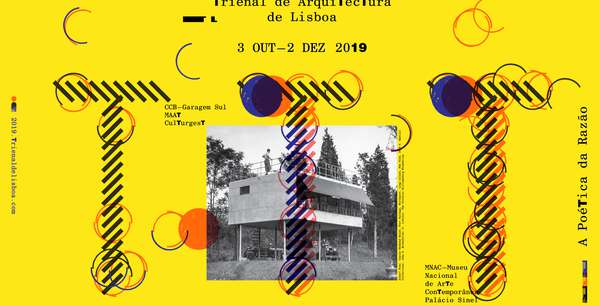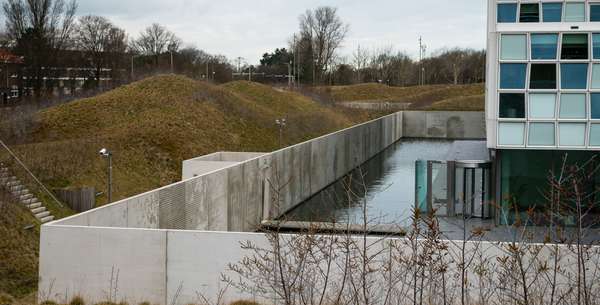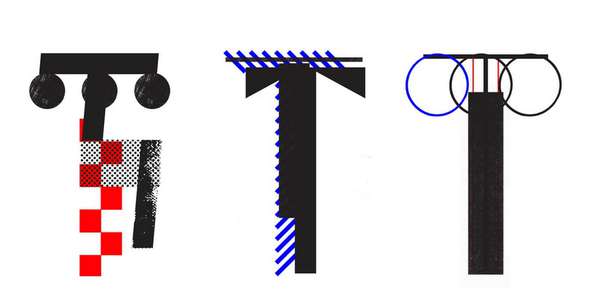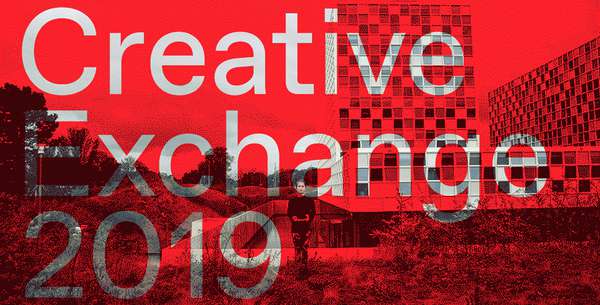Idea by
Lodovica Guarnieri
https://lodovicaguarnieri.com/
Call for ideas 2019
(UN)just Peace
(UN)just Peace
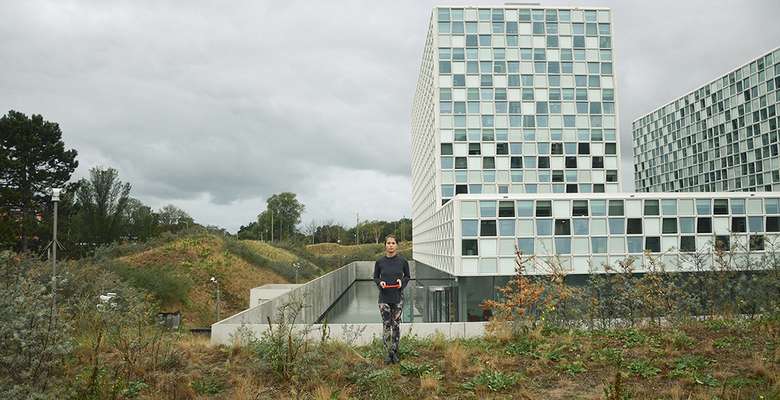
- Systemic changes
(UN)just Peace is a project exploring the historical and contemporary landmarks of the International Zone in The Hague. From the Peace Palace to the International Criminal Court, The Hague’s architecture embodies the evolution of Western values of internationalism, democracy and justice - yet the city’s prosperity has been insidiously linked to (neo)colonial economies of war spanning from anti-malarial production to security industry. Using architecture as an archaeological means, the project explores the cultural influence of warfare industry on the spatial representation of justice and unveils the military economies, technologies and territories connected to these building and landscapes. By raising issues of power, meaning and ideology as they relate to the spatial representation of internationalism, the project employs architecture to address both Europe’s colonial heritage and the progressive militarization of public space within and on the borders of the European Union.
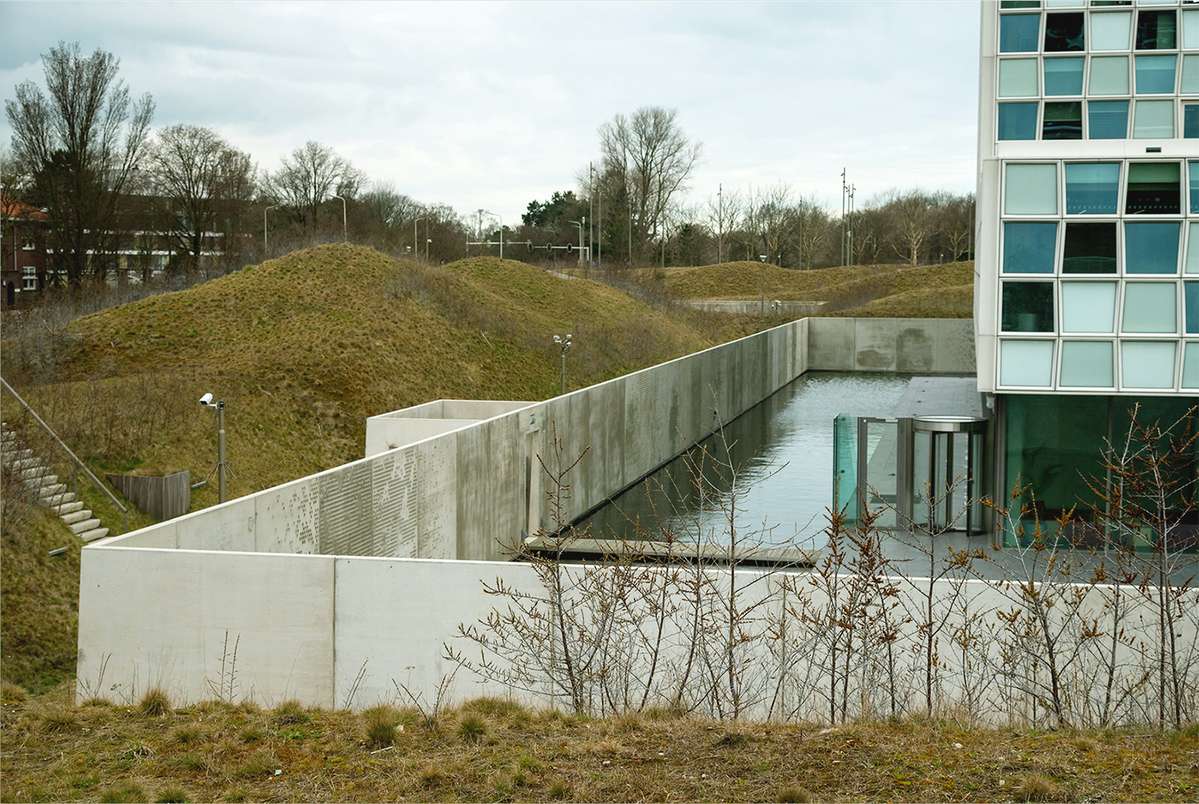
The International Criminal Court premises. The man-made landscape surrounding the building conceals a series of architectural features such as cameras, trenches, a three meters high concrete wall and a ditch. “Security is a more politically acceptable way of describing what was traditionally defence.” stated the senior vice-president of one of the security companies in charge of setting the security measures of the project. (Picture: Jannes Linders, courtesy of Stroom Den Haag)
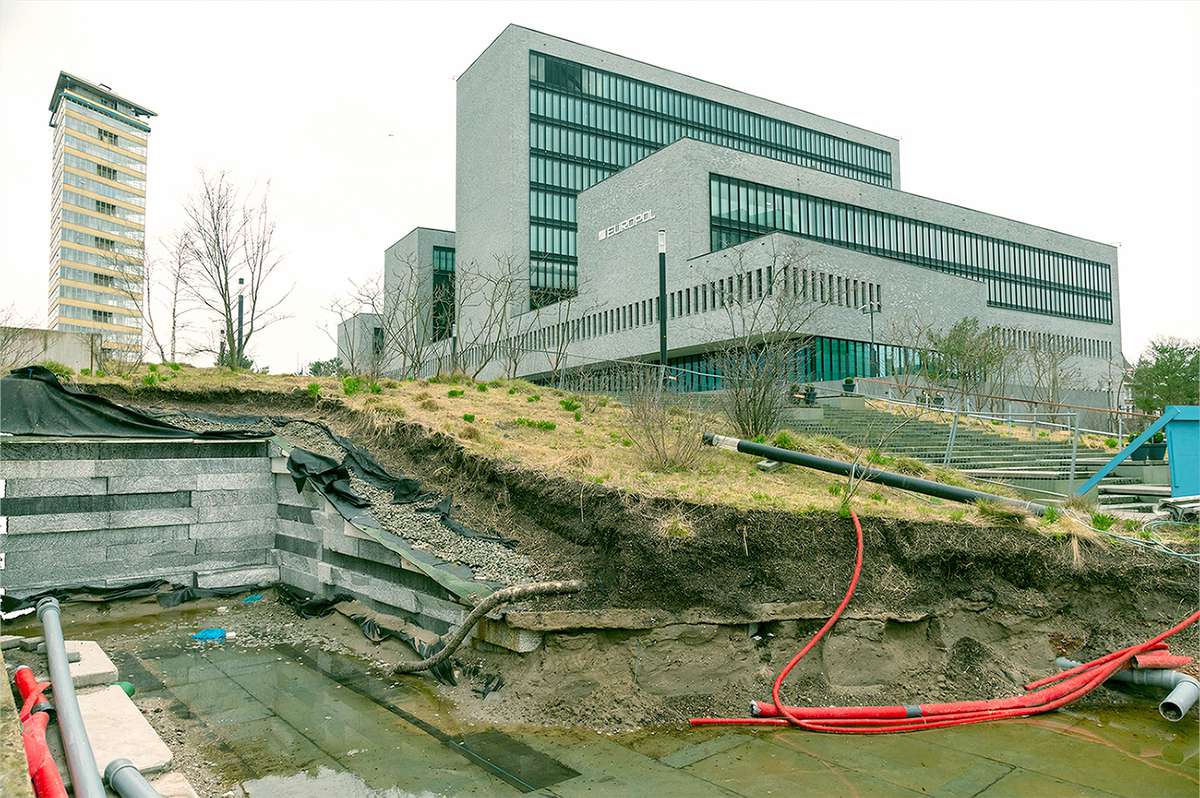
Europol’s headquarters. Europol is the European Union Agency for Law Enforcement Cooperation that provides support for the prevention and punishment of cross-border crimes. The artificia dunes create a fortress made of concrete and sand. Opacity and invisible defensive structures merged within the landscape connect to the technologies, such as underwater drones and sensors, employed by Europol to guarantees security along the EU borders. (Picture: Jannes Linders, courtesy of Stroom Den Haag)
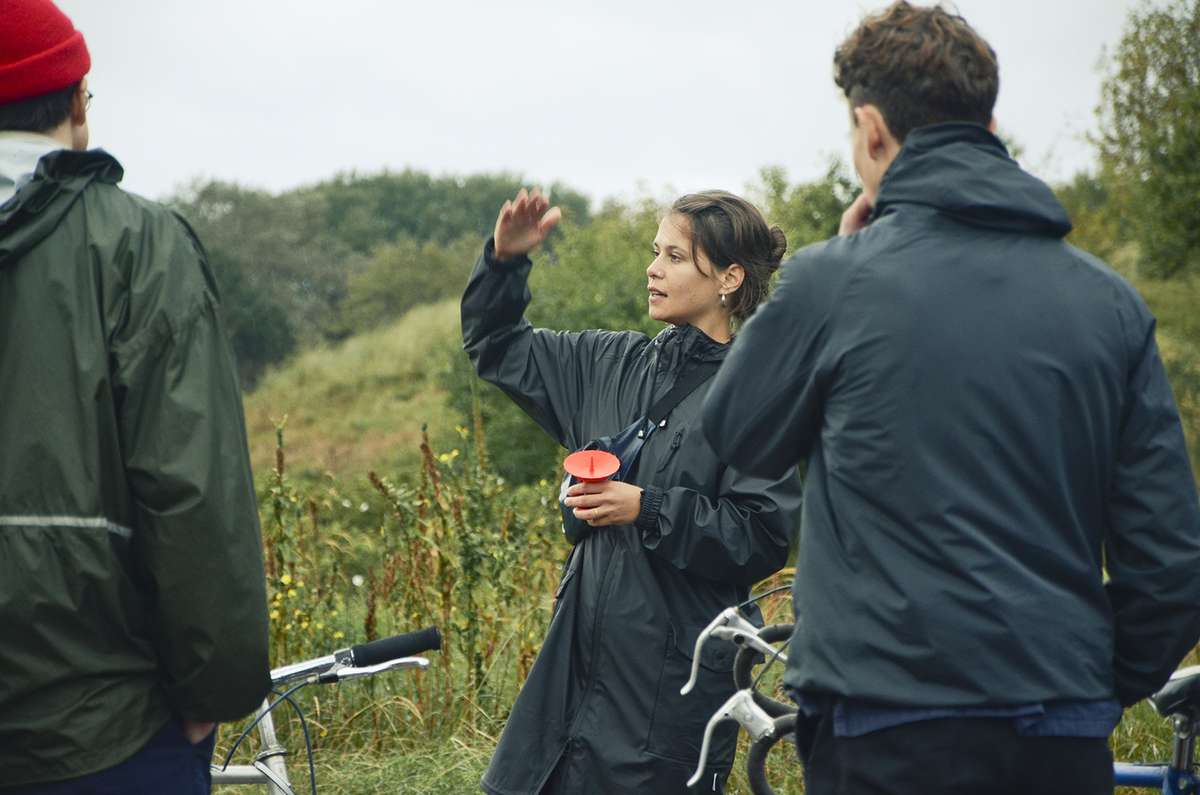
In front of NATO Communication and Information Agency during the (UN)just Peace tour organized in collaboration with Stroom Den Haag in September 2018. From NCIA's building branch out the invisible electromagnetic lanes that feed a geography of control which for example commands surveillance drones flying over Europe and the Middle East. The clear sky and the upper regions of air beyond the clouds are observed as a vehicle of a weaponized data Cloud. (Picture: Corradino Garofalo)
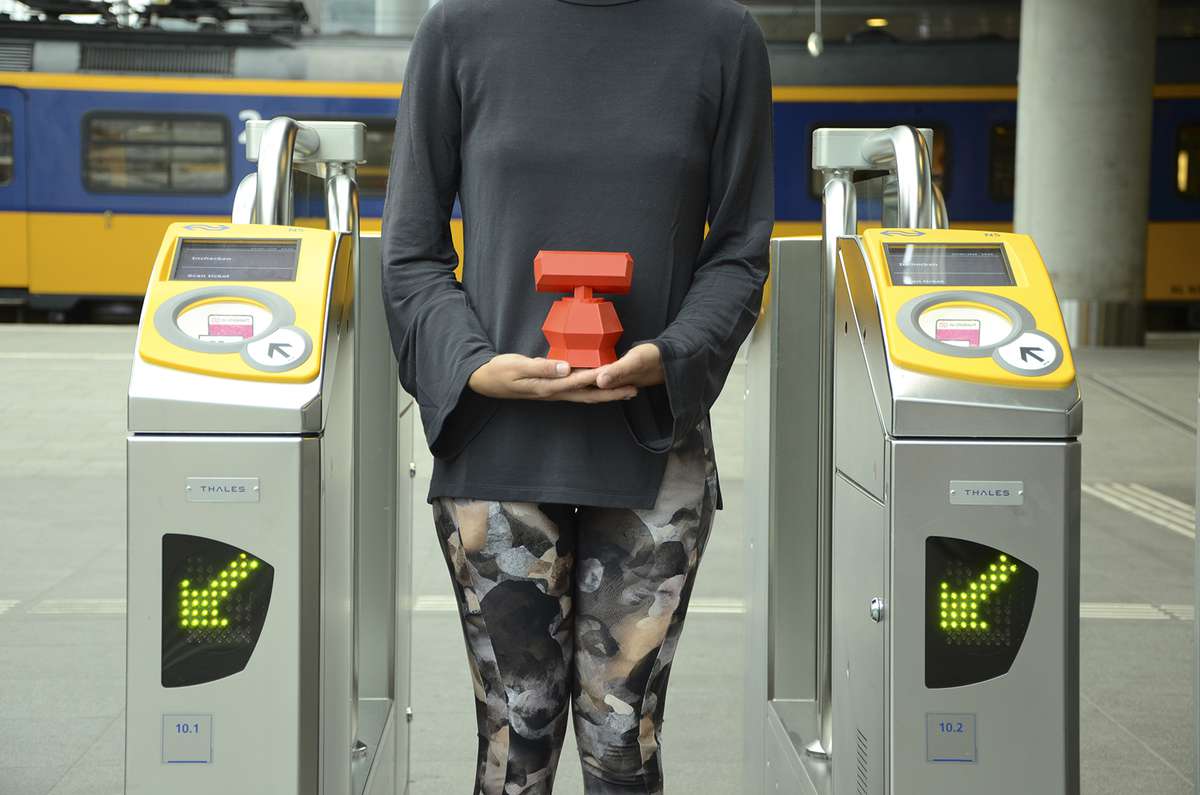
At the Hague Central Station, during the (UN)just Peace tour. Described as a cathedral of light, the station is the gateway to access the International Zone. Specific materials unveils how military equipment outlines the European horizon as well as its logistics. The gateways of the station extend their architecture into the radars and drones patrolling Europe’s external borders. (Picture: Corradino Garofalo)
(UN)just Peace
(UN)just Peace

- Systemic changes
(UN)just Peace is a project exploring the historical and contemporary landmarks of the International Zone in The Hague. From the Peace Palace to the International Criminal Court, The Hague’s architecture embodies the evolution of Western values of internationalism, democracy and justice - yet the city’s prosperity has been insidiously linked to (neo)colonial economies of war spanning from anti-malarial production to security industry. Using architecture as an archaeological means, the project explores the cultural influence of warfare industry on the spatial representation of justice and unveils the military economies, technologies and territories connected to these building and landscapes. By raising issues of power, meaning and ideology as they relate to the spatial representation of internationalism, the project employs architecture to address both Europe’s colonial heritage and the progressive militarization of public space within and on the borders of the European Union.
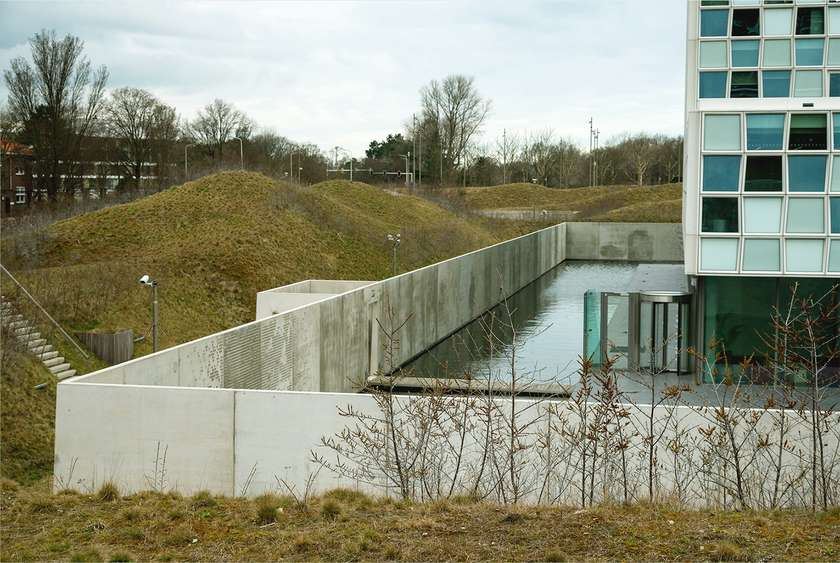
The International Criminal Court premises. The man-made landscape surrounding the building conceals a series of architectural features such as cameras, trenches, a three meters high concrete wall and a ditch. “Security is a more politically acceptable way of describing what was traditionally defence.” stated the senior vice-president of one of the security companies in charge of setting the security measures of the project. (Picture: Jannes Linders, courtesy of Stroom Den Haag)

Europol’s headquarters. Europol is the European Union Agency for Law Enforcement Cooperation that provides support for the prevention and punishment of cross-border crimes. The artificia dunes create a fortress made of concrete and sand. Opacity and invisible defensive structures merged within the landscape connect to the technologies, such as underwater drones and sensors, employed by Europol to guarantees security along the EU borders. (Picture: Jannes Linders, courtesy of Stroom Den Haag)
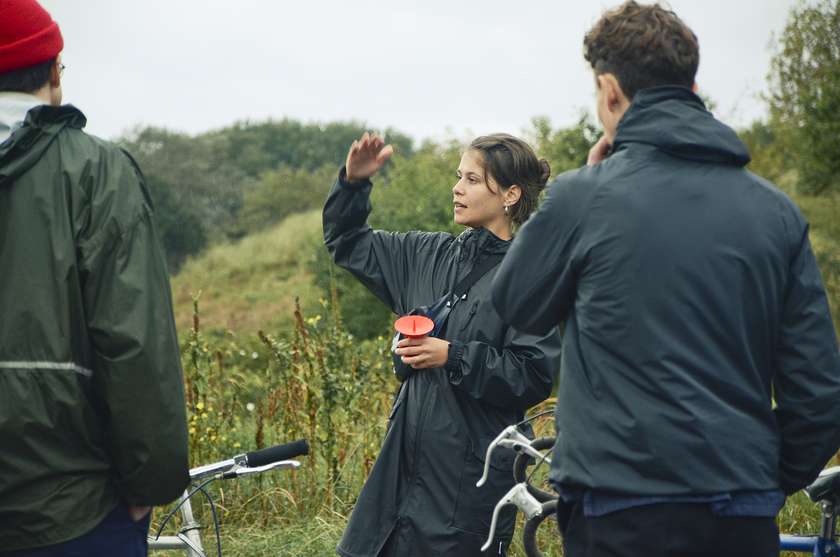
In front of NATO Communication and Information Agency during the (UN)just Peace tour organized in collaboration with Stroom Den Haag in September 2018. From NCIA's building branch out the invisible electromagnetic lanes that feed a geography of control which for example commands surveillance drones flying over Europe and the Middle East. The clear sky and the upper regions of air beyond the clouds are observed as a vehicle of a weaponized data Cloud. (Picture: Corradino Garofalo)
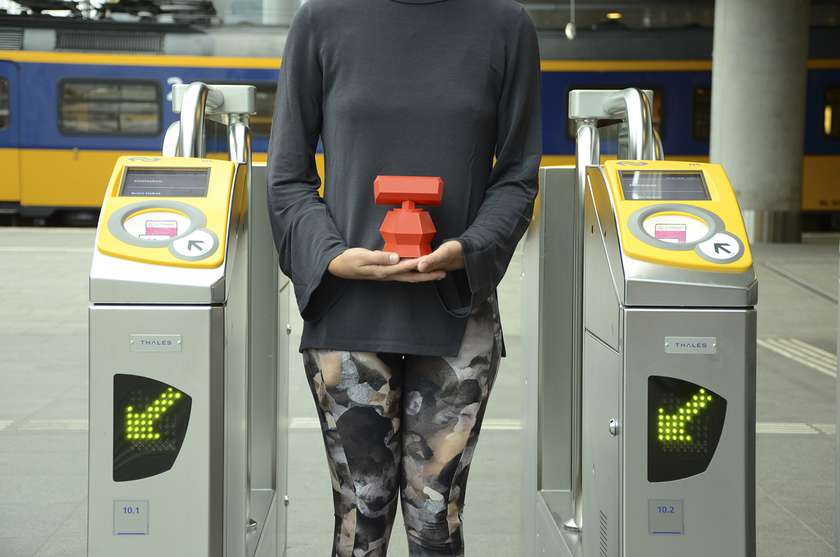
At the Hague Central Station, during the (UN)just Peace tour. Described as a cathedral of light, the station is the gateway to access the International Zone. Specific materials unveils how military equipment outlines the European horizon as well as its logistics. The gateways of the station extend their architecture into the radars and drones patrolling Europe’s external borders. (Picture: Corradino Garofalo)

